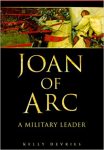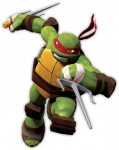Above: A very lifelike drawing of the Teenage Mutant Ninja Turtles, with a certain 5-year-old guest ninja
These days, I’m obsessed to an inordinate degree by the Teenage Mutant Ninja Turtles. If I’m not watching them with my kids, I’m fending off pleas for TMNT toys or, most painfully of all, searching for pieces of Mega Bloks TMNT sets on the floor. So, in an effort to streamline my time, I’m going to bring the turtles into my blog.
I’m going to use the four turtles, Leonardo, Donatello, Raphael and Michelangelo to kick off a new feature, Setting Type. Each of their personalities will be carefully and scientifically analyzed and matched with the perfect Histories Unfolding book for them. That means that the book has to fit with the Histories Unfolding mission: it must have some reasonable connection to history. The fun thing about this exercise is that it will show the wide range of books I’d like to cover in this blog.
The Teenage Mutant Ninja Turtles are fairly consistent in personality throughout all their incarnations, from comics to TV to movies. Despite some nuance filled in over the years, they pretty much fall into four clichéd archetypes: Leonardo is the leader struggling with responsibility, Donatello’s the smart guy, Raphael’s the hothead and Michelangelo’s the joker. While I’m a bit of a comic book originalist (the 2003 animated incarnation holds a special place in my heart, mainly because it’s such a faithful adaptation), any story references will be to the current Nickelodeon series, because that’s the one my kids force me to watch over and over again.
Leonardo

(
Book choice: Joan of Arc: A Military Leader, by Kelly DeVries
Joan was an inspiring leader, but also someone very much out of place in her surroundings. Leo feels much the same way. While Joan was a woman in a man’s world, Leo is a mutant in a human’s world. I could go on with this analogy, with the English compared to the Shredder and France compared to the sewers… uh, I think I’ll stop now.
 DeVries’s book was revelatory in its study of Joan of Arc through the prism of military strategy and tactics, rather than the religious or feminist views of previous books. Leo might take heart in seeing how she trusted her instincts for aggressive tactics to lead the French to victory. Joan’s sense of noble sacrifice fits well with the code of honour taught to Leo by Master Splinter, a mutant rat, in case you’re wondering.
DeVries’s book was revelatory in its study of Joan of Arc through the prism of military strategy and tactics, rather than the religious or feminist views of previous books. Leo might take heart in seeing how she trusted her instincts for aggressive tactics to lead the French to victory. Joan’s sense of noble sacrifice fits well with the code of honour taught to Leo by Master Splinter, a mutant rat, in case you’re wondering.
Donatello

The Sandman, by E.T.A. Hoffman
Not well known today, Hoffmann’s work was nonetheless influential, primarily due to the presence of Olimpia, the young woman who is the protagonist’s obsession. Olimpia turns out to be an automaton and her character is a precursor to the androids of later science fiction as well as, unfortunately, the sexbots of today.
 Donatello is the prototypical nerd, except for his ninja skills, though it should be noted that he gets routinely beaten in fights. With his phenomenal technical skills, he’s built armoured fighting vehicles, jetpacks and Metalhead, a machine-learning, robot fighting turtle. He also has a romantic soul, and nurses an unrequited love for April. So you know, he’s totally building a fembot.
Donatello is the prototypical nerd, except for his ninja skills, though it should be noted that he gets routinely beaten in fights. With his phenomenal technical skills, he’s built armoured fighting vehicles, jetpacks and Metalhead, a machine-learning, robot fighting turtle. He also has a romantic soul, and nurses an unrequited love for April. So you know, he’s totally building a fembot.
Raphael

Confessions of an Ugly Stepsister by Gregory Maguire
Shortly before Wicked was adapted into a hit musical, Maguire brought his revisionist sensibilities to the story of Cinderella. He chose to set his novel, as retold by one of ugly stepsisters, during the Dutch Golden Age of the 17th century. The stepsister, Iris, is awkward and different and believes herself to be a freak. Her story is one of struggle with adulthood, jealousy and otherness.
 As a mutant turtle, Raphael knows just how Iris feels. They both also chafe under the shadow of a more celebrated sibling. While Raph’s frustrations manifest themselves in challenging Leo’s leadership, he might do well to take the long view, as Iris does, who ends up finding more fulfilment than her beautiful stepsister.
As a mutant turtle, Raphael knows just how Iris feels. They both also chafe under the shadow of a more celebrated sibling. While Raph’s frustrations manifest themselves in challenging Leo’s leadership, he might do well to take the long view, as Iris does, who ends up finding more fulfilment than her beautiful stepsister.
Michelangelo

The League of Extraordinary Gentlemen by Alan Moore, art by Kevin O’Neill
An excessive number of words is not a good thing for fun-loving Michelangelo. He loves comic books, and the superheroes he reads about influences his efforts to be a vigilante. Why not use this to introduce literature to him by stealth? Moore’s limited-run series is a steampunk ode to Victorian pulp, adventure and science fiction stories, a veritable orgy of Histories Unfolding’s favourite books.
 Short enough to fit into Mikey’s attention span, he’ll not only get his fill of comic book mayhem, he’ll also gain an appreciation for the literary heroes of Merry Olde England. And he’ll be able to pretend that he’s read the books.
Short enough to fit into Mikey’s attention span, he’ll not only get his fill of comic book mayhem, he’ll also gain an appreciation for the literary heroes of Merry Olde England. And he’ll be able to pretend that he’s read the books.
One thought on “Setting Type: Teenage Mutant Ninja Turtles”